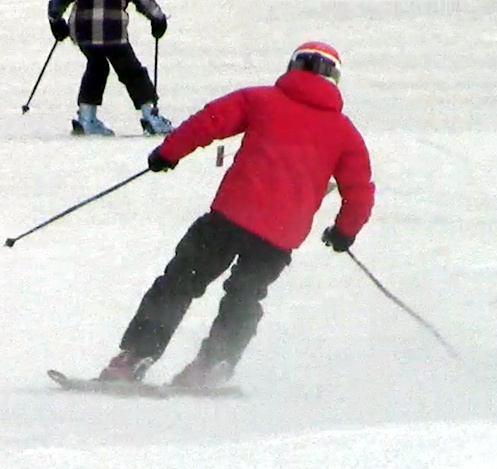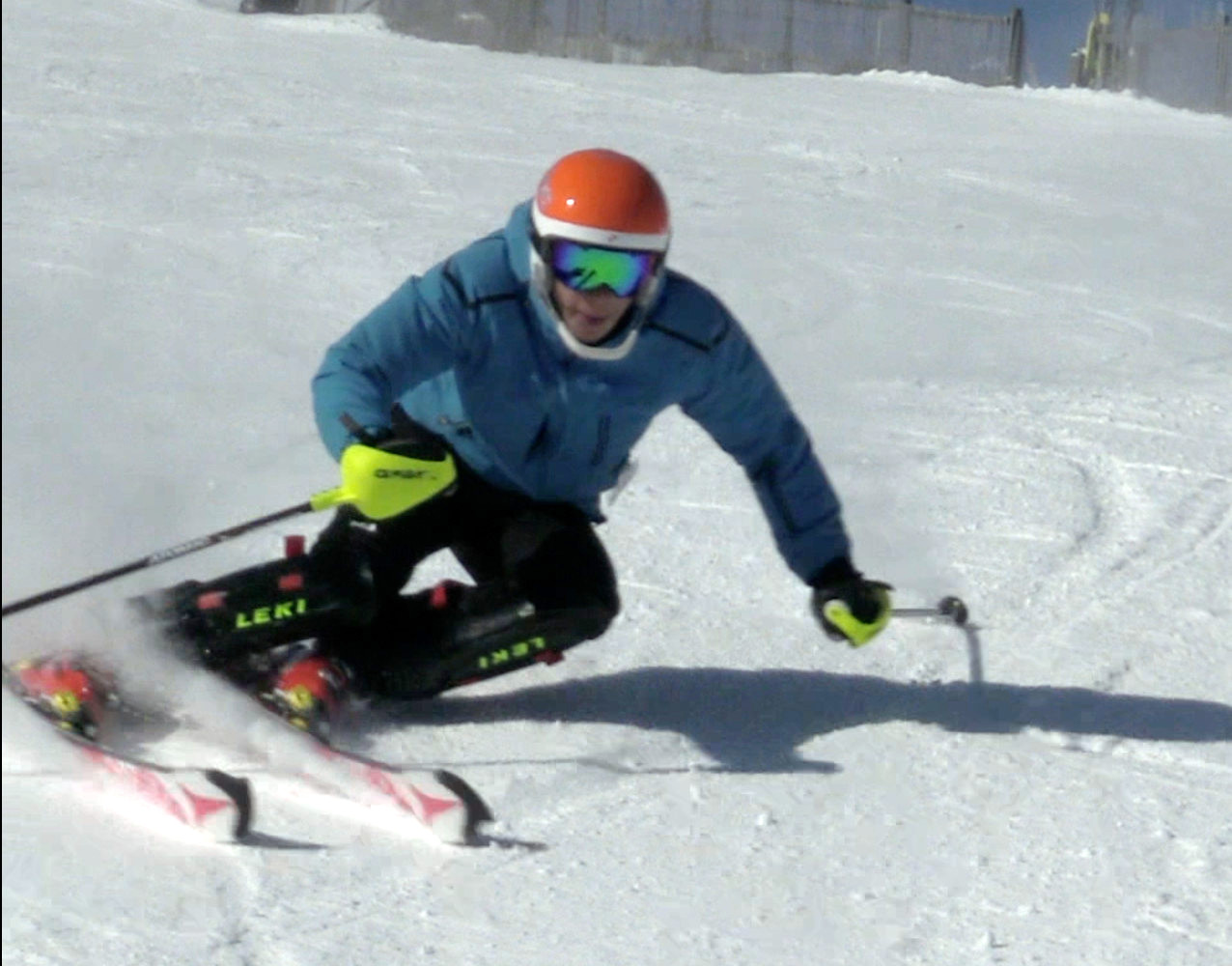Inclination
Pub
Share
Inclination refers to "inclination of COM" and it really means moving the hips inside the turn as the skis get on edge, and the lower body looks "inclined" into the turn, as the skis are on edge.
While sometimes contrasted with angulation or counterbalancing, inclination of the lower body is generally considered independent of the that of the upper body: in the example below, the skier has an inclination of COM and very little counterbalancing (hip angulation):
We prefer to see all skiing as requiring angulation via counterbalancing. How much exactly is a matter of speed and turn shape. Here's a lot of it, allowing the skier to balance on the outside ski at high edge angles, in a tight turn:
The skier above has a significant inclination of COM, but with a lot of counterbalancing or hip angulation this time, to allow him to stay in balance at higher edge angles.
Too much speed will put a big strain on the back if you go in with a lot of counterbalancing. In speed events, at the apex, where the pressures are at maximum, it is more preferable to have less, although in GS these days, there is more and more of it, as skiers try to get the skis more and more on edge - the mitigating factor there is the coiling, which allows the skier to stack better, but that's another topic.
In technical skiing, short/medium turns, too little counterbalancing would reduce the hold of the outside ski. It would also create a pendulum motion of the upper body.
See Inclination vs angulation... this is just enough for the given turns:
Banking
We've been contrasting inclination of COM with banking or leaning in. Banking is a movement of the shoulders into the new turn as opposed to tipping and allowing the hips moving in first - it is a mistake.
Leaning in usually results in too much weight on the inside ski and reduces the hold of the outside ski.
Sometimes inclination is viewed as ok, a tactical choice - the reality is that since we're Movements oriented, inclination is not a movement it really is a lack of movement and the movement that would be missing is Counterbalancing.
Moving the hips?
So, the term inclination is used to refer to the fact that we need to have the hips (Center of Mass) inside the turn, as the skis are put up on edge. This causes many to focus on "moving the hips" and what's more, edging itself is sometimes seen as a result of this "inclination" or moving the hips inside the turn...
That leads to upper-body skiing, which is a technical mistake... read on.
To see more on this topic, you need a membership. (Basic)
More thoughts
To see more on this topic, you need a membership. (Basic)
Early inclination and edging
The generic meaning of "inclination" in racing circles these days is about establishing "early inclination" into the new turn. It really refers to moving the mass of the body inside the turn early, to allow the skis to go on edge soon.
It is a perspective related to establishing an Upside down where the skis are on edge very soon, at the top of the turn.
Careful when you use this cue, since it may lead to "pushing" the hips down, which creates problems with edging early, see early pressure.
See Counterbalancing for drills, sessions and more details.
Drills:
Tech talks / sessions:
- Lower body and upper body separation
- Explore the upper body
- It's snowtime to balance
- Explore angulation
- Upper and lower body separation again
- The crunch
- Lifting the inside hip
Posts:
Start improving your counterbalancing
Here's another (somewhat opposing) point of view: Inclined to win.
You need to log in to post a comment!



